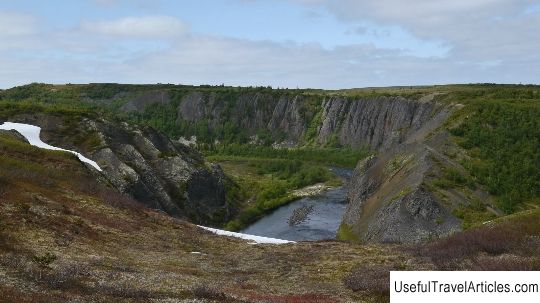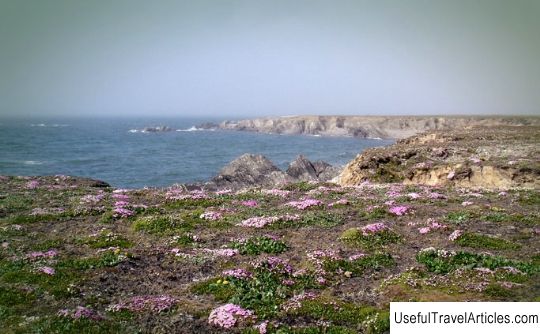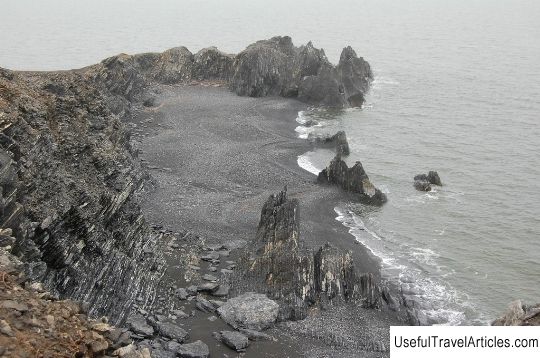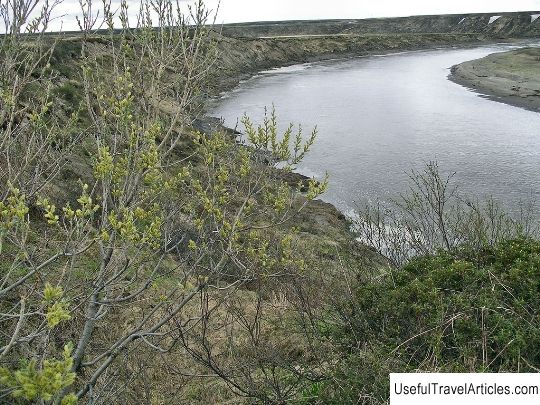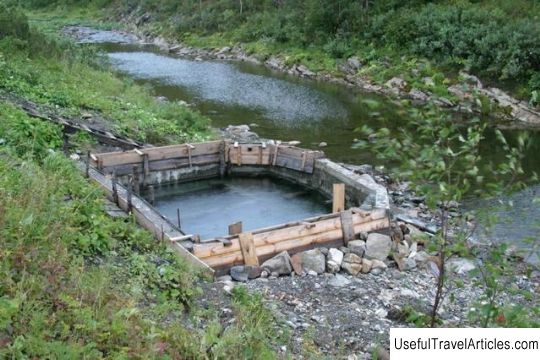Natural monument ”Stone City” description and photo - Russia - North-West: Nenets Autonomous Okrug
Rating: 9,3/10 (6943 votes) 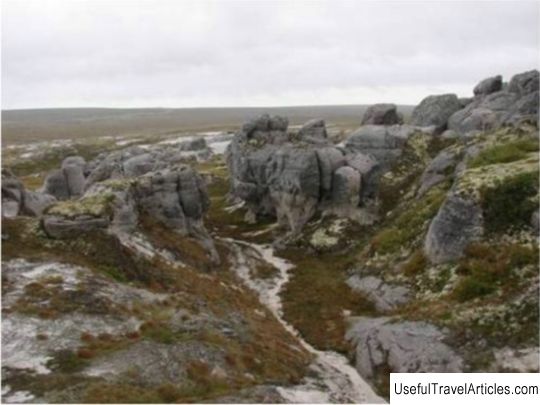
Natural monument "Stone City" description and photos - Russia - North-West: Nenets Autonomous Okrug. Detailed information about the attraction. Description, photos and a map showing the nearest significant objects. Photo and descriptionIn the Nenets Autonomous Okrug, in the Zapolyarny region, namely in the valley of the White River, there is a state natural monument "Stone City". This natural monument has regional significance; its appearance is due to the decree of the Government of the Arkhangelsk region of February 8, 2011. The natural monument was created for the purpose of preserving this natural object, including the picturesque landscapes of the Belaya River, as well as for the study of paleontological, geological, botanical and ichthyological objects located in the Timan tundra, which are especially valuable from the point of view of science, aesthetic and environmental education. The total territorial area of the "Stone City" is almost 4900 hectares. The state natural monument is a unique in nature stone objects, the average height of the peaks of which is especially high, for example, the height of the Timan stone in the area of the Belaya river basin ranges from 160 to 180 meters, with a maximum height of 220 meters. It becomes clear that the most important waterway of the Zapolyarny region is the Belaya River, which has a fast flow, which is more typical for rifts. In the zone where the river makes its way on the territory of contact of various types of rocks, it is especially common to see rapids, the formation of which is caused by blocks of conglomerates and sandstones. Since the Zapolyarny region is located in the southern part of the tundra zone, the state monument nature has become a place of distribution of sparsely located forest islets inherent in the forest-tundra. These objects are formed by the following species: European spruce, aspen and birch. Fragments of aspen and birch forests can be seen in the hollows and on the slopes of the southern points, which fall into the river valley. Particularly characteristic of this area is shrub vegetation, which occurs at the bottom of narrow valleys or river tributaries. There are several varieties of dwarf willows, but thickets of filiform willow are especially common. The most important role in the flora of this zone is played by the so-called tundra communities or moss-lichen dwarf birch and shrub-lichen complexes. Of particular interest is the vegetation growing in meadows, which is more typical for floodplain terraces and riverine slopes. These herbaceous communities grow as boreal species, very rare in the Zapolyarny region - this is a spreading forest, a ducking peony and a single-flowered cotoneaster. The Belaya River Valley is a unique site in which you can meet 126 species of animals, including 78 species of birds, 23 species of fish and 22 species wild mammals. More than 370 representatives of the plant world were found, of which 108 species belong to lichens, 185 to vascular plants and 83 to liverworts and leafy plants. There are 28 objects of flora and fauna listed in the Red Book under protection in the area of the "Stone City" natural object. It should be noted that 10 species need close attention and special attention, which is very important for the conservation of the species. In addition to the species included in the Red Book, in the zone of the natural monument there are interesting species, the rarest for the Nenets Autonomous Okrug, the prospect of which is very great to be included in the Red Book. One of these representatives was a lichen called scion alektoria, which is found only in some areas of the district. Frost weathering has become one of the most important factors of relief formation in the river valley. The relief is formed in the process of destruction associated with exogenous factors of various formations of conglomerates and sandstones. As a result of such a disturbance, geomorphological formations or outliers, unique in nature, are born, presented in the form of pillars, which are characterized by rounded and smoothed shapes. Geomorphological formations are common on the coastal slopes and along the banks of the Belaya River, but always in the valley. An important feature of the valley of the natural monument is the discovered flora dating back to the late Eifel period.      We also recommend reading Ca 'd'Oro palace description and photos - Italy: Venice Topic: Natural monument ”Stone City” description and photo - Russia - North-West: Nenets Autonomous Okrug. |
